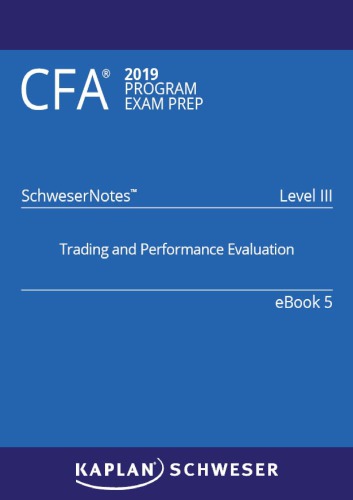Market microstructure refers to the structure and processes of a market that may affect the pricing of securities in relation to intrinsic value and the ability of managers to execute trades. The microstructure of the market and the objectives of the manager should affect the type of order the manager uses. The two major types of orders are market orders and limit orders. The first offers greater certainty of execution and the second offers greater certainty of price. A market order is an order to execute the trade immediately at the best possible price. If the order cannot be completely filled in one trade, it is filled by other trades at the next best possible prices. The emphasis in a market order is the speed of execution. The disadvantage of a market order is that the price it will be executed at is not known ahead of time, so it has price uncertainty. A limit order is an order to trade at the limit price or better. For sell orders, the execution price must be higher than or equal to the limit price. For buy orders, the execution price must be lower than or equal to the limit price. The order could be good for a specified period of time and then expire or could be good until it is canceled. However, if market prices do not move to within the limit, the trade will not be completed, so it has execution uncertainty.
چکیده فارسی
ریزساختار بازار به ساختار و فرآیندهای یک بازار اشاره دارد که ممکن است بر قیمت گذاری اوراق بهادار در رابطه با ارزش ذاتی و توانایی مدیران برای انجام معاملات تأثیر بگذارد. ساختار خرد بازار و اهداف مدیر باید بر نوع سفارشی که مدیر استفاده می کند تأثیر بگذارد. دو نوع عمده از سفارشات، سفارشات بازار و سفارشات محدود هستند. اولی اطمینان بیشتری از اجرا و دومی اطمینان بیشتری از قیمت را ارائه می دهد. سفارش بازار دستوری است برای اجرای فوری معامله با بهترین قیمت ممکن. اگر سفارش را نتوان در یک معامله به طور کامل پر کرد، توسط معاملات دیگر با بهترین قیمت های ممکن بعدی تکمیل می شود. تاکید در سفارش بازار، سرعت اجرا است. نقطه ضعف سفارش بازار این است که قیمتی که در آن اجرا می شود از قبل مشخص نیست، بنابراین دارای عدم قطعیت قیمت است. سفارش محدود سفارشی است برای معامله با قیمت محدود یا بهتر. برای سفارش های فروش، قیمت اجرا باید بالاتر یا مساوی با قیمت حد باشد. برای سفارش خرید، قیمت اجرا باید کمتر یا مساوی با قیمت حد باشد. سفارش ممکن است برای یک دوره زمانی مشخص خوب باشد و سپس منقضی شود یا تا زمانی که لغو نشود خوب باشد. با این حال، اگر قیمتهای بازار به سمت حد مجاز حرکت نکند، معامله تکمیل نخواهد شد، بنابراین عدم قطعیت اجرا دارد.
ادامه ...
بستن ...
Author(s): Schweser, Kaplan
Series: LEVEL 3
Year: 2019
ISBN: 978-1-4754-8104-4
ادامه ...
بستن ...










